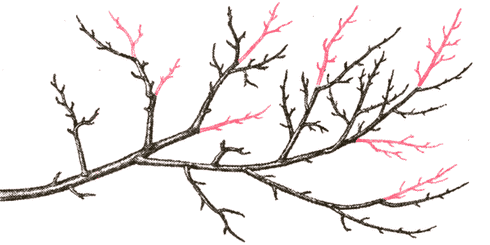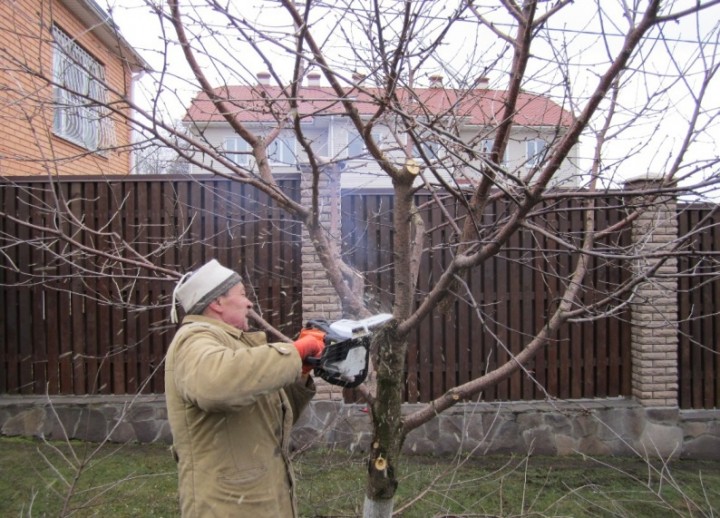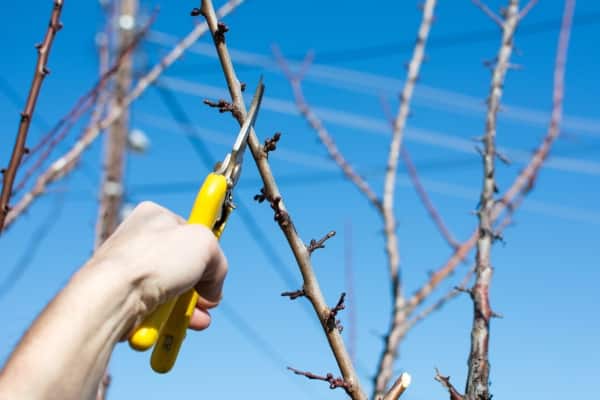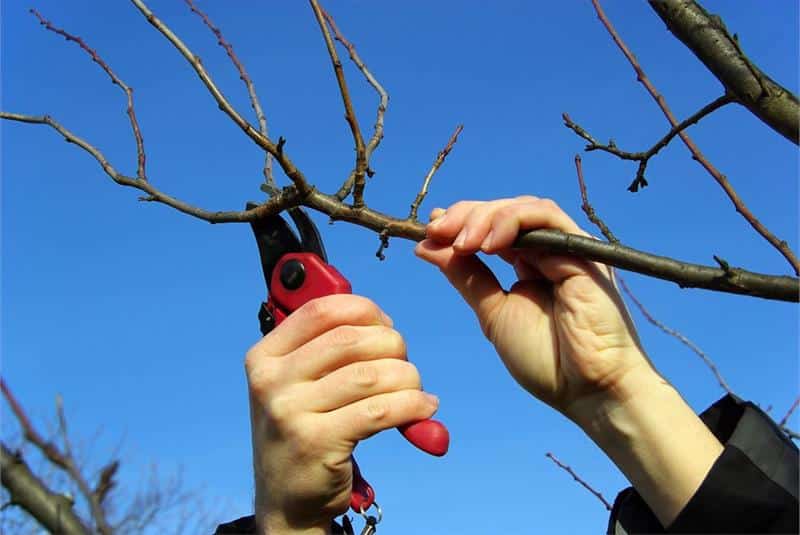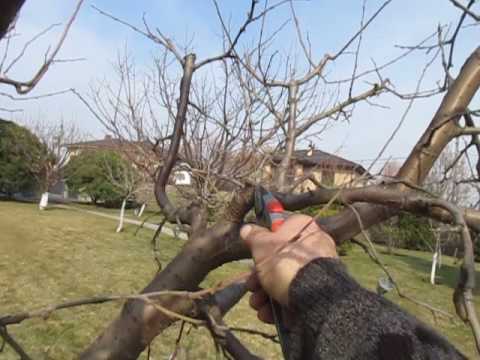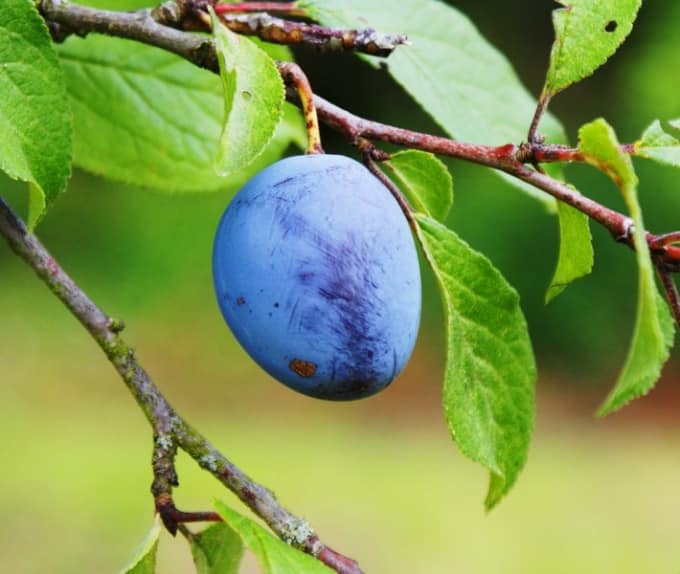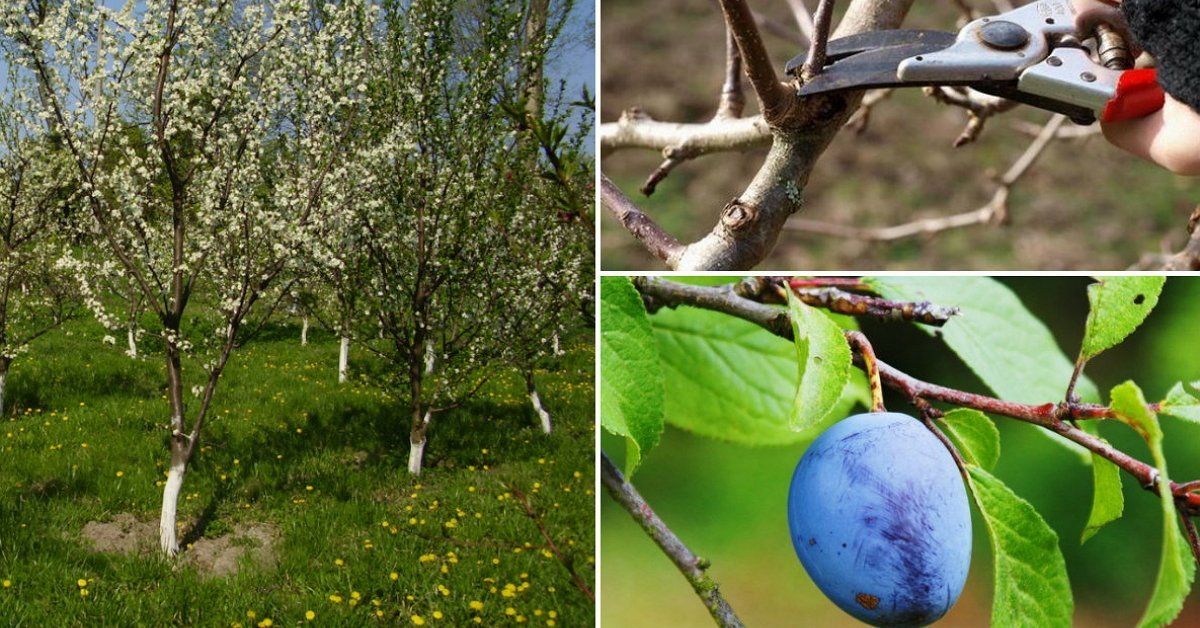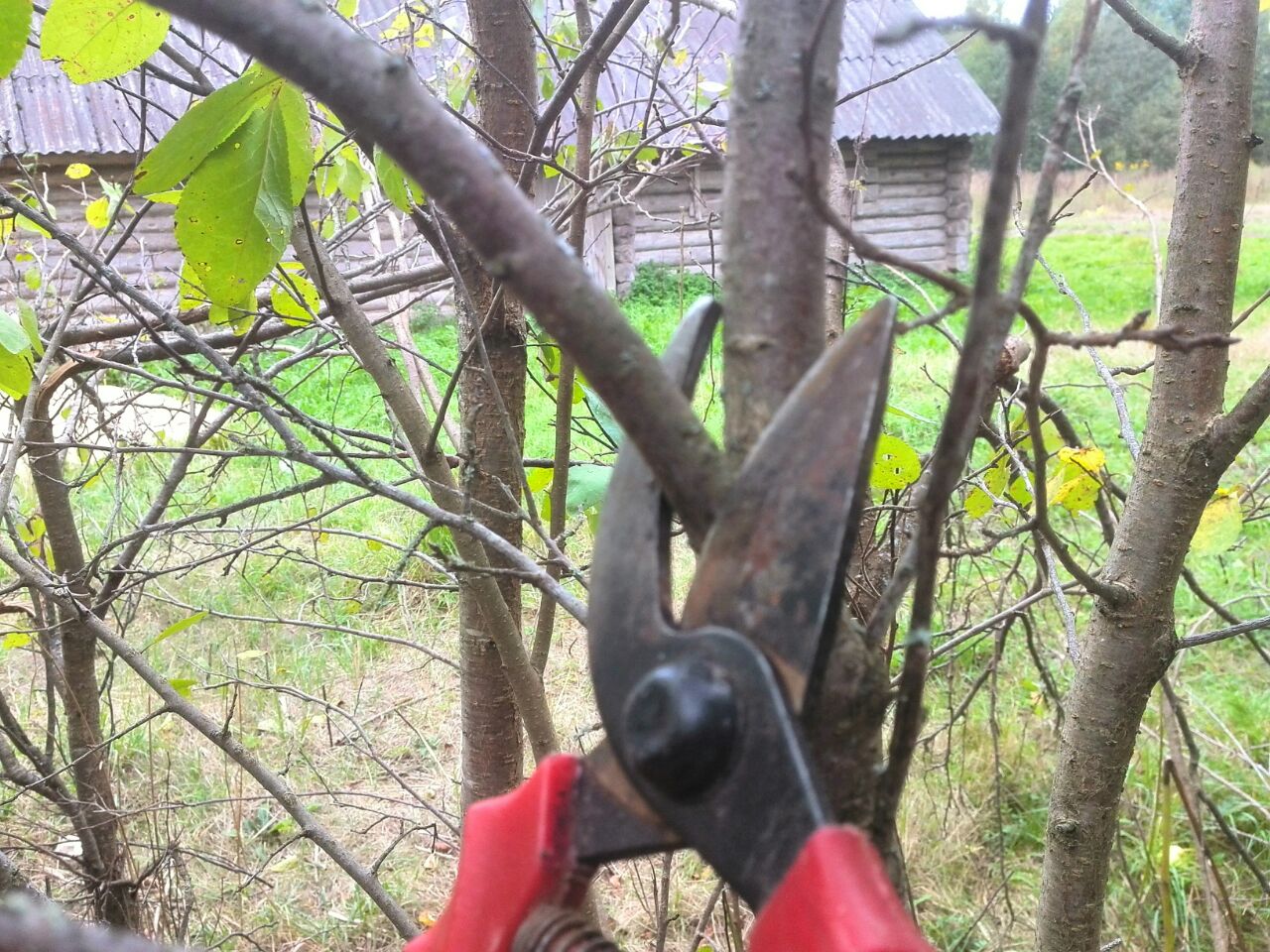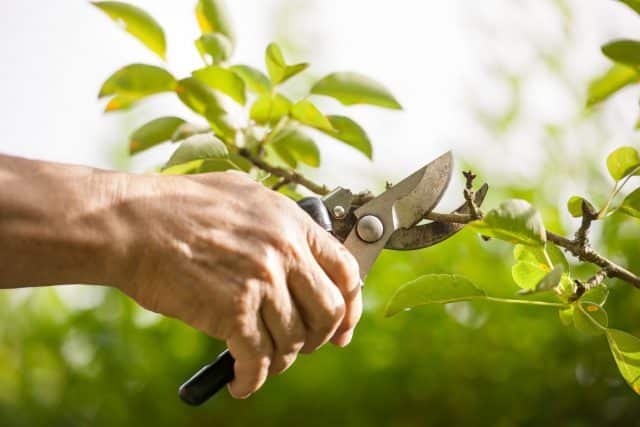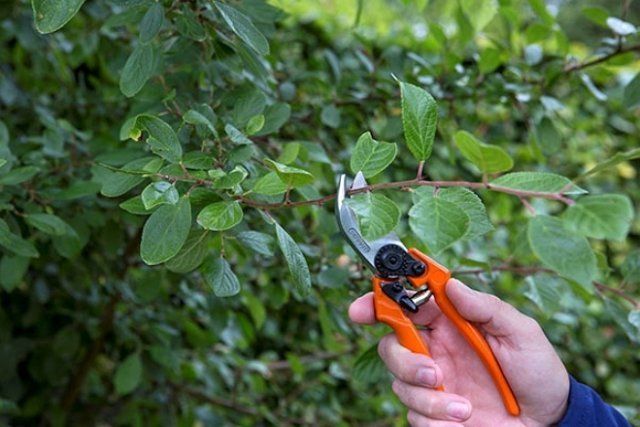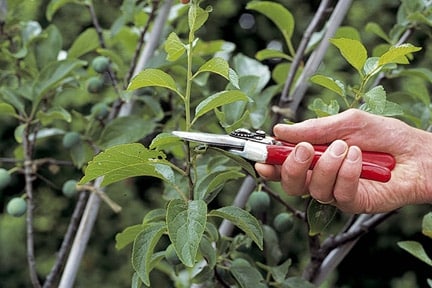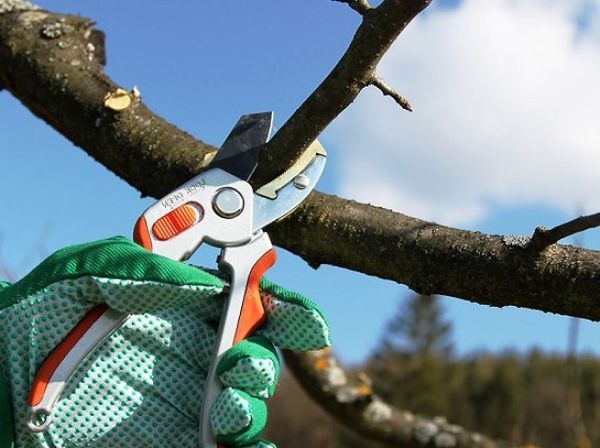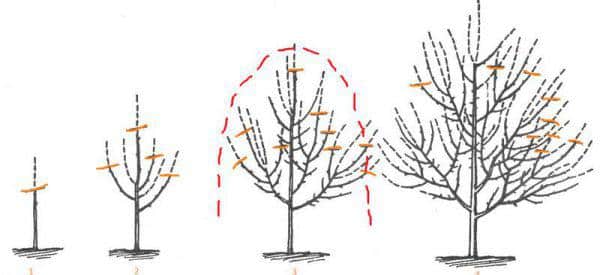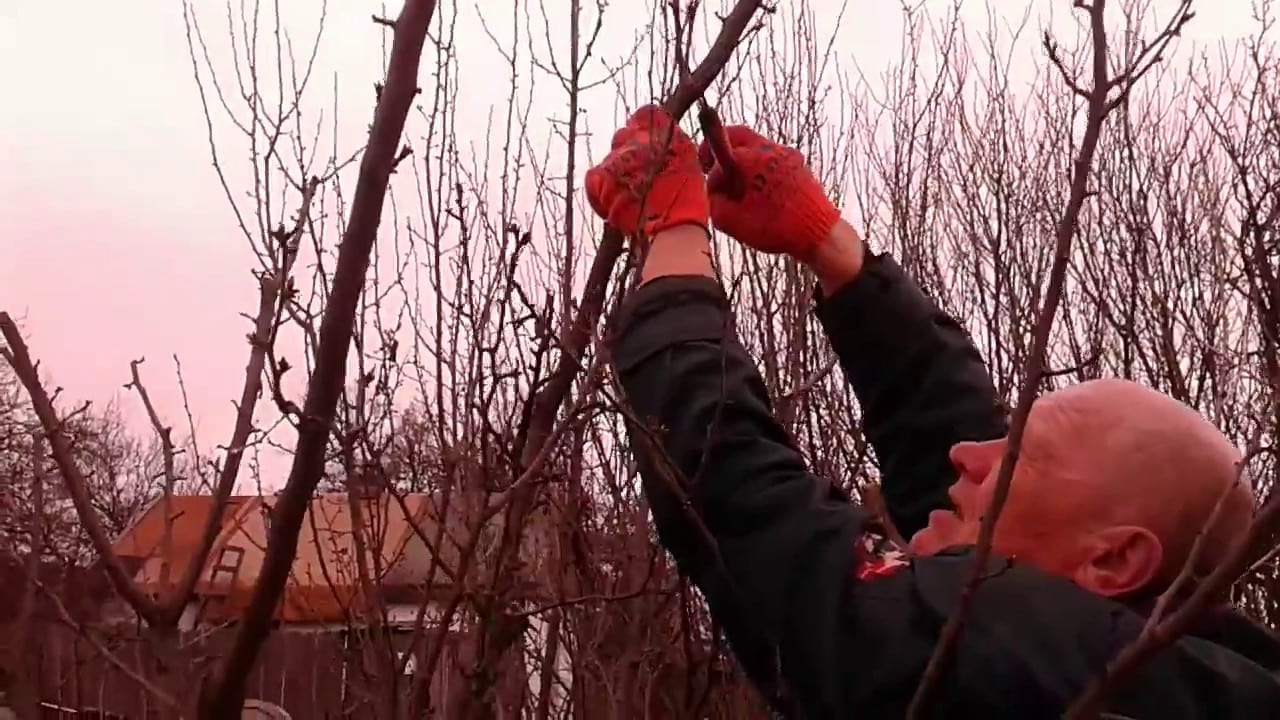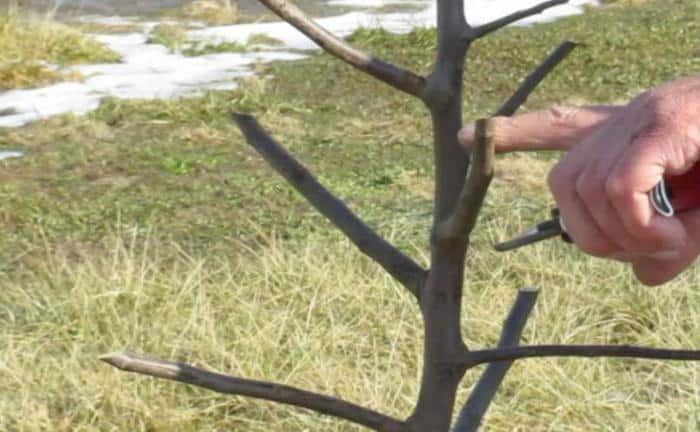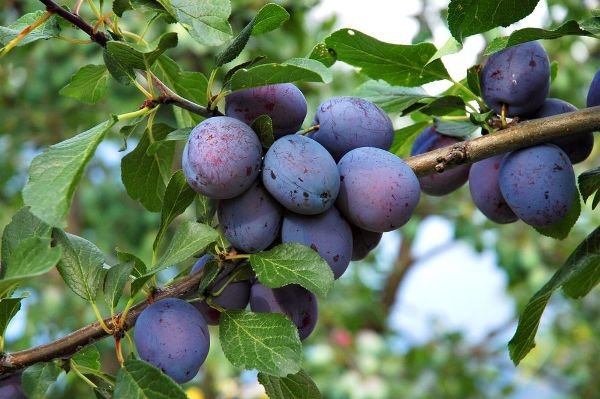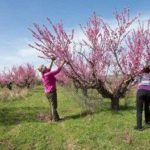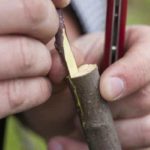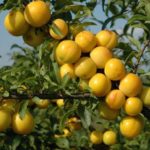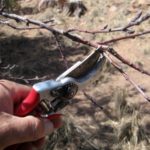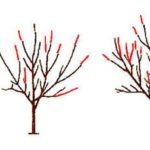Almost every gardener is interested in how to properly prune a plum tree. This tree is quite unpretentious; many varieties reproduce by root shoots. You can always get as much planting material as you need. But then the problems begin: the tree produces abundant annual growth. And this does not mean that a good harvest will be obtained: extra shoots thicken the crown and shade the fruits. The cream simply doesn't ripen. To ensure regular fruiting, the gardener must prune plum trees.
- Purposes of plum pruning
- Sanitary
- Thinning
- Formative
- Rejuvenating
- Required tools and materials
- Timing of the procedure
- Features of pruning in spring
- Autumn pruning
- Formation in summer
- Popular crown shapes
- Bowl-shaped
- Tiers
- Pyramidal
- Bush
- Schemes and shapes of the crown of young trees
- Pruning seedlings when planting in spring
- How to form in the first year
- Pruning a 2 year old plum tree
- Technology for pruning fruiting plums
- Rejuvenating old trees
- Unusual methods
- How to form columnar varieties
- How to prune a yellow plum
- Is it necessary to cut off the lower branches?
- How to remove tops
- Caring for a trimmed tree
Purposes of plum pruning
In order to have a good plum harvest, the following basic conditions must be met:
- provide the ripening fruits with enough sunlight (this cannot be done without thinning the crown);
- allow the wood of the fruiting shoots to fully ripen (to do this, cut out the weak ones);
- protect the tree and fruits from pests (regular inspection requires removing excess branches);
- prevent possible diseases (prophylactic spraying of thickened crowns is ineffective);
- ensure the possibility of uniform filling and ripening of fruits (for this it is recommended to thin out the crown and remove weak shoots with small cream).
After strong wind, snow or rain, there are many damaged branches in the garden. They should also be cut out.
Sanitary
This type of plum pruning is performed by all gardeners. Over the years of life the tree:
- suffers from bad weather;
- the wind breaks branches;
- snow sticks to the shoots and causes their damage;
- harmful insects parasitize in bark and wood and cause shoots to dry out;
- Winter cold causes the death of fruiting shoots.
In order to preserve the variety and prolong fruiting, sanitary pruning is carried out. Proper implementation ensures harvests of healthy fruits.
Sanitary pruning is carried out at any time of the year. But the air temperature should not fall below -5 degrees Celsius.
Thinning
During its life, the plum produces too many shoots. This is especially true for varieties of folk selection and old species. Not all shoots will begin to bear fruit in the future, and the tree’s strength will be taken away. Many branches cross and rub against each other. As a result, the bark is damaged and infection penetrates into the wounds. The plant begins to hurt, fruiting stops. Subsequently, the tree may die. The abundance of shoots leads to shading of the crown and ripening fruits.
In addition, it is important to understand: weak branches cannot produce healthy and large berries.
The tree must direct nutrition and moisture to the ripening fruits. And you have to share with useless branches. And in this case, no amount of nutrition and watering will provide the gardener with a decent harvest of plums. Thinning pruning is carried out in order to prevent damage to the tree and ensure stable fruiting.
Formative
This type of pruning is carried out to give the tree an ideal crown shape for ease of care and to ensure abundant fruiting. It should begin from the moment the tree is planted in the garden. A well-formed crown gives the plum a decorative appearance. Formative pruning is often combined with thinning and sanitary pruning. This happens in case of unforeseen vagaries of nature or with an unexpectedly large increase.
Formative pruning is stressful for the tree. It is carried out when sap flow has not yet begun (in February-March) or has already stopped (October-November).
Rejuvenating
Quite a brutal procedure. It is recommended to do it when a gardener wants to restore fruiting of a valuable plum variety.
The essence of this operation:
- all old branches are deleted;
- young ones are cut out (crossing, rubbing against each other, shading the crown, growing inside the crown);
- the remaining ones are shortened by 1/3.
The tree perceives the situation as critical, life-threatening. After this procedure, the plum either dies or restores fruiting. But you should not expect a miracle: the tree will produce an average harvest for 1-2 years, and then fruiting will stop again.
Required tools and materials
Before the procedure, it is recommended to prepare everything you need. The gardener will need:
- sharp pruning shears for cutting branches with a diameter of up to 0.7 cm;
- saw with a hacksaw with a fine step;
- lopper for removing inconvenient branches;
- a sharp knife for cleaning up cuts;
- garden ladder for processing tall trees;
- disinfectant solution for disinfecting instruments (alcohol, vodka, potassium permanganate);
- basket for cut shoots;
- gloves to protect hands from cuts;
- garden varnish with a spatula or oil paint with a brush for covering cuts with a diameter of 1 cm.
Before carrying out the operation, you should determine what type of pruning will be performed and study the instructions.
Timing of the procedure
Gardeners are interested in what month is the best time to prune a plum tree. It depends on the type of pruning, the age of the tree and climatic conditions. It is preferable to carry out forming before the start of sap flow or after its completion. The same applies to the anti-aging procedure.
Sanitary pruning is carried out at any time of the year, if necessary. Don't wait until late autumn to cut out damaged or shriveled branches. In summer, it is useful to do a little crowning for plums. Thinning pruning will help rid the tree of fattening, useless shoots.
It is important to remember: the older the plum, the sooner sap flow will begin, which means that pruning needs to start earlier.
Features of pruning in spring
Botanists say: early spring is the ideal time for formative pruning and tree rejuvenation. Unnecessary shoots are cut out of the plum, and in return fruit buds are laid. But the procedure must be completed before the tree finally awakens, because the drain perceives any intervention as stress. The temperature during the operation should not fall below -5 degrees Celsius. It is not recommended to prune plum trees in rain or snow.
Autumn pruning
After fruiting, the tree prepares for a difficult period in its life - winter. It is recommended to cut out immature shoots: they will freeze during cold weather. Those that are too long need to be shortened.
At this time, you can carry out shaping and rejuvenating procedures. To do this, you should choose a windless day, since fungal spores and pathogenic bacteria are often carried by air currents. There should be no rain either: under a layer of garden varnish, a fungus easily settles on wet wood. It then penetrates the wood and damages the tree.
In the fall, it is useful to thin out the plum tree. While not all the leaves have fallen yet, you can see which shoots are thickening the crown.
Formation in summer
Other pome trees are not pruned in the summer. The exception is sanitary pruning. But the plum tolerates the gardener’s intervention well. At the end of June or July it is useful to make light bookings. At this time, the fattening tops are removed, and too long shoots are shortened by 1/3 of the length. Such operations increase the illumination of fruiting shoots and provide them with nutrition.In the summer, withered branches that were not noticed in the spring are also cut out: they are clearly visible during this period.
Popular crown shapes
For beginning gardeners, it is important to determine what the crown of their plum tree will be like. And only then begin to form it correctly. It is impossible to correct the mistakes made without reducing the yield.
Bowl-shaped
A plum trimmed in this way looks unusual. The advantage of a cup-shaped crown: uniform illumination of ripening fruits in the center. How to get the bowl shape:
- At a height of 50-60 cm, 3-4 strong shoots are selected. They should be located at an angle of 60 degrees to the trunk. They are shortened by 1/3 of the length, and the rest is cut out.
- The crown of the plant (central conductor) is completely cut out.
- In subsequent years, all shoots growing inside the crown are cut out. Skeletal branches are shortened.
Advantages of pruning: simplicity and speed of creation. Disadvantage of a cup-shaped crown: with heavy snowfalls, snow sticks to the branches and damages them.
Tiers
The formation of this type of crown occurs within 5 years. The optimal number of tiers is 3, the permissible height of the tree is 2.5 m. This shape allows you to easily carry out thinning and sanitary pruning, spraying and harvesting. Stages of creating a tiered crown:
- In the first year, the central conductor is cut at a height of 1.5 m from the soil surface. Side shoots are cut into a ring at a height of 0.6 m.
- In the second year, 1 tier of branches is laid. To do this, choose 3-4 strong shoots growing at an angle of 60 degrees or more to the trunk. They are left, if necessary, shortened by 1/3 of the length, and the rest are cut into a ring. The central conductor is shortened above the strongest bud.
- In the third year they form the 2nd tier. Its basis is strong shoots, spaced 20-30 cm from the branches of the 1st tier.The procedure consists of shortening 3-4 selected shoots and cutting the rest into rings. The central conductor is cut again above the strong bud. We should not forget about thinning and sanitary pruning.
- In subsequent years, the 3rd tier is formed. If desired, the gardener can form a crown of 4-5 tiers.
This type of crown is traditional. Tiered pruned plums are most often found in gardens.
Pyramidal
A novice gardener can easily cope with the formation of a pyramidal crown. Work principles:
- The central conductor is left without trimming. It is shortened only if the plum grows poorly.
- The branches forming the crown should hug the trunk. Fruit buds form on them. The shoots growing outward are cut out.
- Shoots that are too long are shortened by 1/3 of their length.
We should not forget about sanitary and thinning pruning when forming a pyramidal crown.
Bush
This method of crown formation is used in case of irreversible damage to the trunk. Sometimes a gardener comes to the site in the spring and sees that the central conductor has been chewed by mice or hares and cannot be restored.
In this case, you can try to save the variety. What to do:
- Cut down or trim the trunk below the damage site. Cover the cut area with garden varnish or oil paint.
- Feed and water the remaining stump.
- After some time, the sleeping buds will wake up and sprout.
- From these shoots a new crown is formed.
- The strongest ones are left, the weakest ones are cut out.
- At the end of the season, the shoots are slightly shortened: this operation stimulates the growth of side shoots.
Further formation of the crown comes down to leaving strong shoots, thinning the bushes and sanitary pruning.
Schemes and shapes of the crown of young trees
Proper pruning of young plums in the first years of their life in the garden will ensure a timely start to fruiting. Such trees are easy to care for, including pruning later.
Pruning seedlings when planting in spring
The purpose of the initial pruning of the seedling is to facilitate its establishment in the garden. When planting young plums in spring, it is recommended:
- cut all shoots to a height of 0.5 m from the soil surface;
- shorten the central conductor at a height of 1.5 m.
As a result, the root system of the young tree will be able to conduct nutrients and moisture to the remaining shoots. Over the summer, the plant will create strong underground and above-ground parts.
How to form in the first year
After a year of life of the tree in the garden, a second pruning is necessary. To do this, the central conductor is cut above the largest bud. At the same time, shoots that are too long are shortened by 1/3, and thickening and crooked shoots are cut out. The purpose of the event: to make the crown convenient for further work with the tree.
Pruning a 2 year old plum tree
In the second and subsequent years, pruning is carried out according to the following algorithm:
- cutting of the central conductor is carried out above the largest bud (in this case, the length of the central conductor should not exceed 2.5 m);
- the center conductor must be straight;
- shorten branches that are too long;
- cut out shoots growing inward;
- remove branches rubbing against each other;
- cut out the fattening tops.
It is important to remember about regular sanitary tree pruning.
Technology for pruning fruiting plums
Sometimes a summer resident acquires a plot of land with existing plum trees. They are quite young and bear fruit. But pruning has not been done for a long time. What to do in such cases:
- Take a closer look at the tree. Maybe it will be possible to establish what shape the crown was originally.In this case, it is enough to carry out sanitary and thinning pruning.
- If the tree is severely damaged and neglected, then you can try to form the crown again. Suppose it is impossible to restore the tiered shape of the crown, but it is possible to create a cup-shaped one based on the old one. In this case, pruning is carried out in several stages: it is important to bring minimal stress to the plant.
- If the tree in the garden has a well-formed crown and pruning was carried out regularly, then it is enough to do sanitary and thinning pruning.
- To restore fruiting of plums older than 15 years, rejuvenating pruning is recommended.
Plum is a tree with active shoot formation. Leaving the crown unattended means losing a significant part of the harvest.
Rejuvenating old trees
If the tree is younger than 15 years old, but does not bear fruit, then rejuvenating pruning will not correct the situation. To increase yield, plums older than 15 years are rejuvenated. The operation is not performed if the plant has damaged skeletal branches and the central conductor.
How to perform the operation:
- cut out the central conductor up to 2.5 m;
- cut out the oldest skeletal branches;
- remove weak competing shoots;
- cut out tops and fattening shoots;
- shorten branches that are too long.
The crown of the tree should be shaped like a young (6-7 year old) plum. Typically, the plant responds to such an event with increased fruiting. To increase the effectiveness of the event, you should water and feed the plant after pruning.
Unusual methods
One of the most popular non-standard methods of pruning plum trees is to work in winter. The ideal month for this is February.The air temperature often passes through 0, daylight hours have increased, but the plant has not yet awakened. At such times, it is useful to carry out sanitary and thinning pruning. They are the least traumatic for the tree.
In this case, it is important to follow the rules: cut out excess shoots into a ring, remove burrs and treat the cuts with garden varnish or oil paint.
How to form columnar varieties
Columnar plums are early-bearing, low-growing plants. Even a novice gardener can easily cope with pruning the crown. When performing the procedure, it is recommended to adhere to the following principles:
- side branches should be shortened to 20 cm;
- the central conductor is pruned in case of growth retardation (pruning is done to redirect and create a new one);
- cut out competing shoots (the strongest remains).
In short, the gardener must maintain the pyramidal crown shape characteristic of the plum.
How to prune a yellow plum
The main difference between yellow-fruited plums is the special color of the fruits. There are no other botanical differences. Therefore, gardeners can choose any method they like for pruning.
Is it necessary to cut off the lower branches?
When forming the first tier, all lower branches are cut into a ring at a distance of 50-60 cm from the ground. Branches that are damaged or growing parallel to the soil should also be removed.
How to remove tops
During the process of growth and development, the plum forms tops. They are generated by dormant buds.
Distinctive features of spinning top shoots:
- grow from dormant buds of the trunk, sometimes from skeletal branches;
- grow vertically upward;
- have large leaves;
- fruiting shoots look stronger;
- never bear fruit (fruiting buds are not laid).
Spinning tops can be used to form a crown if the tree is severely damaged and threatens to die. In all other cases they need to be cut out. The operation is carried out throughout the year, including in the summer. Young tops are broken out by hand, grown ones are cut into a ring. At the same time, it is important not to leave a stump: in the future, a hollow will form in this place.
Caring for a trimmed tree
Proper pruning requires a set of measures to care for the tree.
After the operation you should:
- clean off burrs formed during trimming;
- coat sections larger than 1 cm with a thin layer of heated garden varnish or paint over them with oil paint;
- water and feed the tree with seasonally appropriate fertilizers;
- mulch the tree trunk circle (during spring pruning).
When carrying out activities in early spring, you should choose a time before the plant begins to awaken. Autumn work must be completed 2-3 weeks before stable negative temperatures are established.

